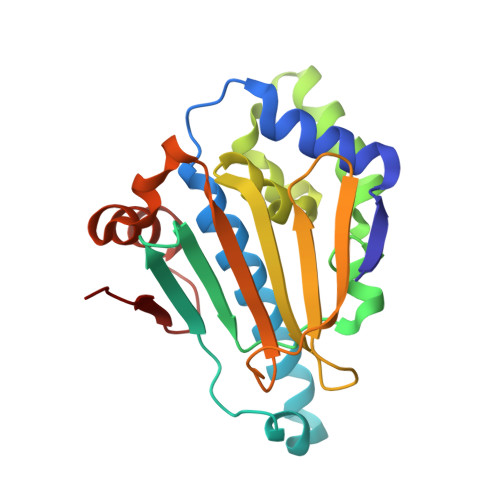Predicting Residence Time and Drug Unbinding Pathway through Scaled Molecular Dynamics.
Schuetz, D.A., Bernetti, M., Bertazzo, M., Musil, D., Eggenweiler, H.M., Recanatini, M., Masetti, M., Ecker, G.F., Cavalli, A.(2019) J Chem Inf Model 59: 535-549
- PubMed: 30500211
- DOI: https://doi.org/10.1021/acs.jcim.8b00614
- Primary Citation of Related Structures:
6HHR - PubMed Abstract:
Computational approaches currently assist medicinal chemistry through the entire drug discovery pipeline. However, while several computational tools and strategies are available to predict binding affinity, predicting the drug-target binding kinetics is still a matter of ongoing research. Here, we challenge scaled molecular dynamics simulations to assess the off-rates for a series of structurally diverse inhibitors of the heat shock protein 90 (Hsp90) covering 3 orders of magnitude in their experimental residence times. The derived computational predictions are in overall good agreement with experimental data. Aside from the estimation of exit times, unbinding pathways were assessed through dimensionality reduction techniques. The data analysis framework proposed in this work could lead to better understanding of the mechanistic aspects related to the observed kinetic behavior.
Organizational Affiliation:
Department of Pharmaceutical Chemistry , University of Vienna , UZA 2, Althanstrasse 14 , 1090 Vienna , Austria.
















